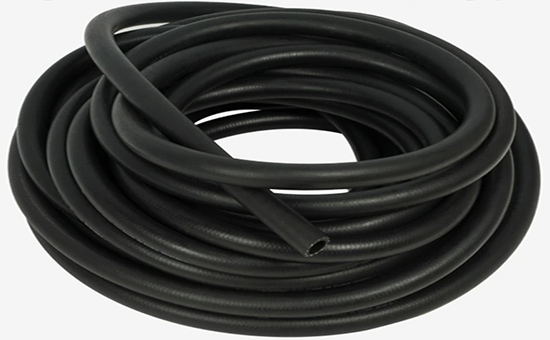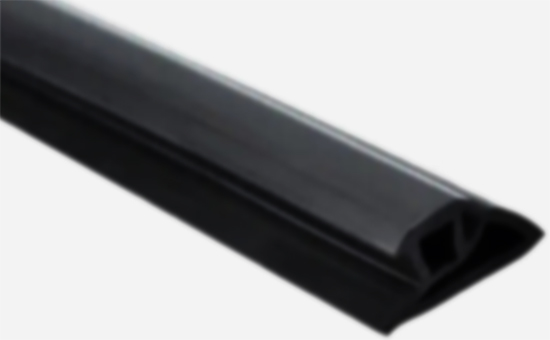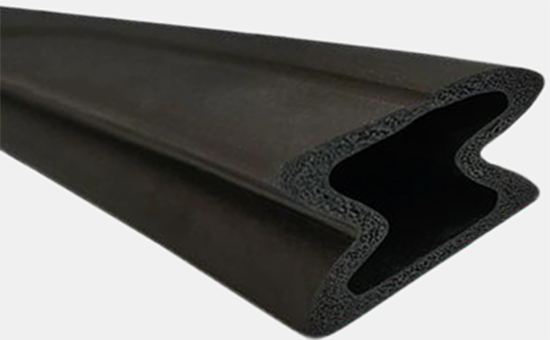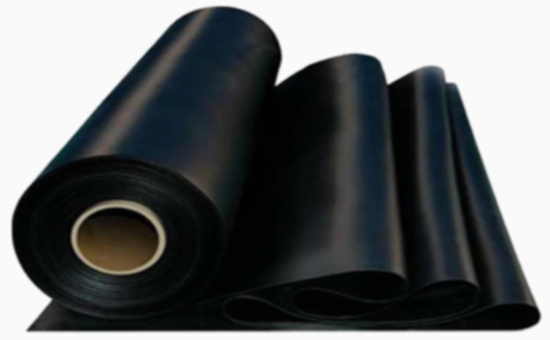
EPDM rubber is made of ethylene, propylene and a small amount of unconjugated diene fin copolymerization, which has excellent ozone resistance, heat resistance, weather resistance and other aging resistance; EPDM reclaimed rubber retains the basic performance characteristics of EPDM original rubber, and can be used alone or combined with original rubber to produce rubber products, effectively reducing the cost of raw materials. When using EPDM rubber/reclaimed rubber and rubber to produce rubber products, you can master several vulcanization tips according to the vulcanization characteristics of rubber.
1. EPDM rubber/reclaimed rubber combined with rubber commonly used vulcanization system
When EPDM rubber and EPDM reclaimed rubber are used together to produce rubber products, a variety of vulcanization systems such as sulfur, peroxide, quinone oxime and reactive resin can usually be used for vulcanization; Among them, sulfur vulcanization system and peroxide vulcanization system are more common in EPDM rubber products, and sulfur-peroxide system can also be used if necessary. Different vulcanization systems also have a direct impact on the Mooney viscosity, scorching time, vulcanization rate, cross-linking bond type, and physical and mechanical properties of the vulcanized rubber.
2. EPDM rubber/reclaimed rubber adopts the technique of sulfur vulcanization system
(1) Effect of sulfur dosage on the properties of EPDM rubber/reclaimed rubber vulcanized rubber

When the sulfur vulcanization system is used in EPDM rubber/reclaimed rubber, the vulcanization system has the advantages of safe operation, moderate vulcanization speed, and good comprehensive physical and mechanical properties. Within a certain range of sulfur dosage, with the increase of sulfur dosage, the vulcanization speed of rubber is accelerated, the scorching time is shortened, the tensile strength, tensile stress and hardness of vulcanized rubber increase, and the elongation at break decreases.
(2) EPDM rubber/reclaimed rubber sulfur vulcanization system accelerator selection skills
In order to prevent frosting of the compound, it must be ensured that the amount of accelerator added does not exceed the critical solubility of EPDM. When using EPDM rubber and reclaimed rubber mixture for sulfur vulcanization, it is recommended to use two or more accelerators to work together with sulfur to achieve a balanced vulcanization process, avoid compounding agent frosting, and reduce vulcanization time and improve crosslinking density through the synergistic effect among accelerators.
(3) Addition techniques of zinc oxide and stearic acid in EPDM rubber/reclaimed rubber sulfur vulcanization system

EPDM/reclaimed rubber in sulfur vulcanization system, increasing the dosage of stearic acid can increase the dosage of accelerator; The increase in the amount of zinc oxide also helps to form an active accelerator during cross-linking, thereby increasing the cross-linking density and anti-regression of the compound, and improving the dynamic fatigue performance and heat resistance. All other things being equal, an increase in the amount of stearic acid leads to an increase in the crosslinking density of monosulfide and disulfide crosslinking bonds.
3. EPDM rubber/reclaimed rubber adopts the technique of peroxide vulcanization system
EPDM rubber and EPDM reclaimed rubber are used together to produce special products that require better high temperature resistance and very low compression set, which need to be vulcanized by peroxide, and the most commonly used and cheapest is cumene peroxide (DCP). Compared with the sulfur vulcanization system, the peroxide vulcanization system has the following characteristics:
(1) Vulcanized rubber has superior heat resistance and low compression set, and even the compression set is very small at high temperature; (2) The vulcanization speed of the rubber material is fast at high temperature, and there is no vulcanization regression; (3) The color stability is good, no pollution, most peroxides are not easy to spray frost, and there is no risk of scorching when the rubber is stored; (4) The formula is simple, and it is easy to co-vulcanize when combined with different polymers.

In actual production, DCP has medium vulcanization speed, high crosslinking efficiency and good scorch safety. The disadvantage is that it smells great; The vulcanization rate is slow at low temperatureE4LYY130, and the vulcanization temperature needs to be increased appropriately. The physical and mechanical properties of vulcanized rubber are low, such as tensile strength, tear strength and wear resistance, especially at high temperature. Compared to sulfur vulcanization, peroxide vulcanization rubber is more costly.
EPDM rubber/EPDM reclaimed rubber can also use resin vulcanization system and quinoquinone oxime vulcanization system.
EPDM rubber products can be vulcanized by vulcanizing tanks, plate vulcanizers, transfer molding and injection molding vulcanization, continuous vulcanization and low-temperature long-term vulcanization. In the future, Xiaobian will continue to share with you the skills of EPDM rubber/reclaimed rubber and plasticizing, mixing, calendering, and extrusion with glue.
Exclusive original article [commercial authorization] reprint, excerpt and excerpt in any form are prohibited without written authorization. Focus on Hongyun rubber: learn the process formula and raw material technology of producing rubber products from recycled rubber to help you reduce costs and increase profits